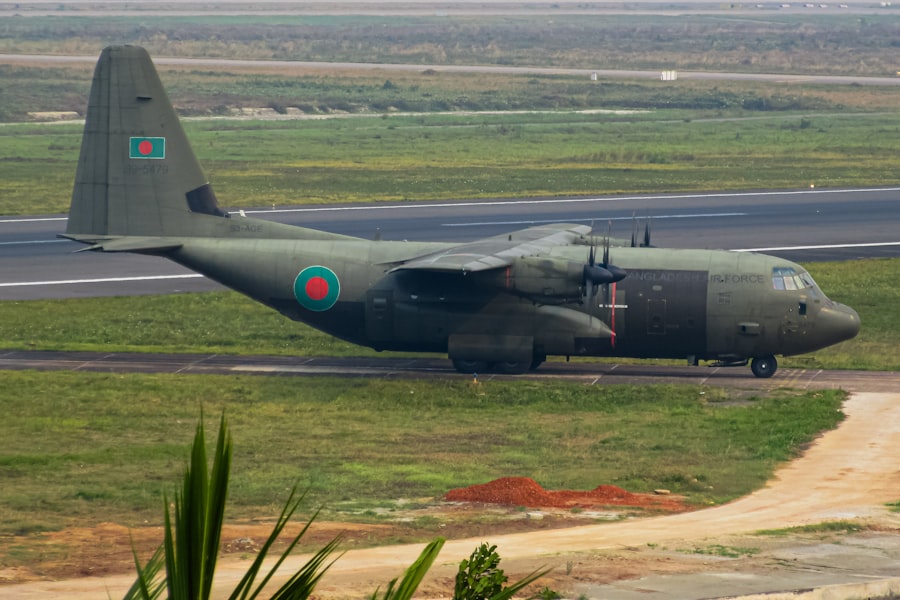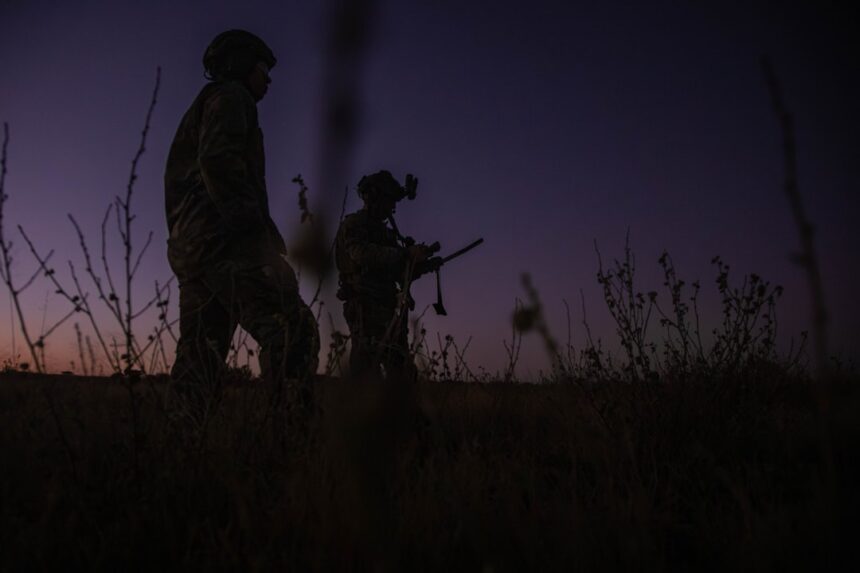Unpredictability is an inherent characteristic of military strategy, often serving as both a challenge and an opportunity for commanders on the battlefield. The chaotic nature of warfare means that no plan can ever be entirely foolproof; unforeseen circumstances can arise at any moment, altering the course of events. This unpredictability can stem from various sources, including the actions of the enemy, environmental factors, and even the morale of troops.
As such, military leaders must cultivate a mindset that embraces uncertainty, recognizing that flexibility and adaptability are crucial components of effective strategy. Moreover, the unpredictable nature of warfare can lead to significant advantages when leveraged correctly. A commander who anticipates the unexpected can outmaneuver opponents who rely solely on rigid plans.
This dynamic interplay between predictability and unpredictability shapes the very essence of military strategy, compelling leaders to think creatively and remain agile in their decision-making processes. The ability to adapt to changing circumstances not only enhances operational effectiveness but also fosters resilience among troops, enabling them to respond effectively to the chaos that often accompanies combat.
Key Takeaways
- Unpredictability is a fundamental aspect of military strategy, requiring adaptability and flexibility.
- Historical examples, such as the success of the Mongol Empire, demonstrate the strategic advantage of unpredictability in warfare.
- Modern warfare necessitates embracing uncertainty and chaos, requiring a shift in traditional military planning.
- Adaptability plays a crucial role in military strategy, allowing for quick adjustments in unpredictable situations.
- Leveraging unpredictability can provide a strategic advantage, creating confusion and disorder for the enemy.
Historical Examples of Unpredictability in Military Success
Throughout history, numerous military campaigns have illustrated the profound impact of unpredictability on success. One notable example is the Battle of Austerlitz in 1805, where Napoleon Bonaparte demonstrated his mastery of deception and surprise. By feigning weakness and allowing the Allied forces to believe they had the upper hand, Napoleon lured them into a vulnerable position.
When the time was right, he unleashed a well-coordinated counterattack that caught his enemies off guard, leading to a decisive victory. This battle exemplifies how unpredictability can be harnessed to create opportunities for success, turning the tide in favor of those who dare to think outside conventional strategies. Another historical instance is the Vietnam War, where the North Vietnamese forces employed guerrilla tactics that defied traditional military expectations.
The unpredictability of their strategies, including ambushes and hit-and-run attacks, frustrated American forces accustomed to conventional warfare. The North Vietnamese capitalized on their knowledge of the terrain and their ability to blend into civilian populations, making it difficult for U.S. troops to anticipate their movements.
This unpredictability not only prolonged the conflict but ultimately contributed to a shift in public perception and policy regarding military engagement, highlighting how embracing uncertainty can yield significant strategic advantages.
Embracing Uncertainty in Modern Warfare

In contemporary military operations, embracing uncertainty has become increasingly vital as conflicts evolve in complexity and scope. Modern warfare is characterized by rapid technological advancements and asymmetric threats, where non-state actors often employ unconventional tactics that challenge traditional military paradigms.
The rise of cyber warfare further underscores the necessity of embracing uncertainty in modern conflicts. Cyber threats can emerge suddenly and without warning, disrupting critical infrastructure and communication systems. Military strategists must remain vigilant and prepared for these unpredictable attacks, developing robust cybersecurity measures while simultaneously training personnel to respond swiftly to emerging threats.
By fostering a culture that values adaptability and creative problem-solving, military organizations can better navigate the complexities of modern warfare and maintain a strategic edge over adversaries.
The Role of Adaptability in Military Strategy
| Metrics | Definition | Importance |
|---|---|---|
| Flexibility | The ability to change plans or actions in response to changing circumstances | Allows military forces to respond to unexpected developments on the battlefield |
| Resilience | The capacity to recover quickly from difficulties | Enables military units to bounce back from setbacks and continue their mission |
| Agility | The ability to move quickly and easily | Facilitates rapid deployment and maneuverability in complex and dynamic environments |
| Adaptability | The capability to adjust to new conditions | Essential for military forces to succeed in ever-changing and unpredictable situations |
Adaptability is a cornerstone of effective military strategy, particularly in an era marked by rapid change and uncertainty. Commanders who can pivot quickly in response to evolving circumstances are more likely to achieve their objectives than those who cling rigidly to preconceived plans. This adaptability extends beyond tactical maneuvers; it encompasses the ability to reassess goals, reallocate resources, and modify approaches based on real-time intelligence.
One prominent example of adaptability in action is the U.S. military’s response during Operation Desert Storm in 1991.
This adaptability allowed coalition forces to execute a highly successful campaign against Iraqi forces, showcasing how responsiveness to unpredictable conditions can lead to overwhelming success on the battlefield.
Leveraging Unpredictability for Strategic Advantage
Leveraging unpredictability as a strategic advantage requires a nuanced understanding of both one’s own capabilities and those of the adversary. Military leaders must recognize that unpredictability can be weaponized; by creating an environment where opponents cannot anticipate actions or responses, they can gain a significant upper hand. This approach often involves employing deception tactics, misinformation campaigns, or unconventional strategies that disrupt enemy planning.
A historical case that exemplifies this principle is the Blitzkrieg tactics employed by Germany during World War
The Importance of Flexibility in Military Planning

Flexibility in military planning is essential for navigating the unpredictable landscape of warfare. Rigid plans can quickly become obsolete when faced with unforeseen developments; therefore, military leaders must prioritize flexibility at every stage of planning and execution. This flexibility allows for real-time adjustments based on changing conditions, ensuring that forces remain responsive and effective in dynamic environments.
In practice, this means incorporating contingency plans that account for various scenarios and potential outcomes. By preparing for multiple possibilities, military leaders can maintain operational momentum even when faced with unexpected challenges. Additionally, fostering a culture that encourages open communication and collaboration among units enhances flexibility by enabling rapid information sharing and coordinated responses to emerging threats.
Embracing Chaos and Disorder on the Battlefield
Embracing chaos and disorder on the battlefield may seem counterintuitive; however, recognizing that chaos is an inherent aspect of warfare can empower military leaders to operate effectively within it. Rather than striving for complete control over every aspect of a conflict, commanders can focus on harnessing the energy generated by chaos to create opportunities for decisive action. This approach requires a mindset shift—viewing chaos not as an obstacle but as a potential catalyst for innovation and creativity.
By encouraging troops to think critically and adaptively in chaotic situations, military leaders can foster an environment where initiative is rewarded, leading to unexpected breakthroughs on the battlefield. This embrace of chaos can ultimately enhance operational effectiveness and contribute to mission success.
The Impact of Technology on Unpredictability in Warfare
The advent of advanced technology has significantly altered the landscape of warfare, introducing new dimensions of unpredictability. Innovations such as drones, artificial intelligence, and cyber capabilities have transformed traditional military operations, creating both opportunities and challenges for commanders. While technology can enhance situational awareness and precision strikes, it also introduces new variables that must be accounted for in strategic planning.
For instance, the use of drones has revolutionized reconnaissance and targeting capabilities but has also made it easier for adversaries to employ countermeasures or exploit vulnerabilities in drone operations. As technology continues to evolve at an unprecedented pace, military leaders must remain vigilant in adapting their strategies to account for these unpredictable elements while leveraging technological advancements to gain a competitive edge.
Training and Preparing for Unpredictable Situations
Training for unpredictable situations is paramount in ensuring that military personnel are equipped to handle the complexities of modern warfare. Realistic training exercises that simulate chaotic environments enable troops to develop critical thinking skills and adaptability under pressure. By exposing soldiers to scenarios that challenge their decision-making abilities, military organizations can cultivate a culture of resilience and innovation.
Moreover, incorporating lessons learned from past conflicts into training programs enhances preparedness for future uncertainties. Analyzing historical examples of unpredictability allows military leaders to identify patterns and develop strategies that account for similar challenges in contemporary contexts. This proactive approach ensures that troops are not only prepared for expected scenarios but are also equipped to navigate unforeseen developments with confidence.
Balancing Risk and Reward in Unpredictable Military Operations
Balancing risk and reward is a fundamental consideration in unpredictable military operations. Commanders must weigh potential gains against the inherent uncertainties associated with any course of action. This requires a nuanced understanding of both operational objectives and the potential consequences of decisions made in unpredictable environments.
Effective risk management involves assessing various factors—such as troop morale, resource availability, and enemy capabilities—while remaining open to adjusting plans as new information emerges. By fostering a culture that encourages calculated risk-taking while maintaining situational awareness, military leaders can navigate unpredictable situations more effectively and capitalize on opportunities as they arise.
Embracing Unpredictability as a Force Multiplier in Military Strategy
Ultimately, embracing unpredictability as a force multiplier can significantly enhance military strategy. By recognizing that uncertainty is an inherent aspect of warfare rather than an obstacle to be avoided, commanders can leverage unpredictability to create strategic advantages over adversaries. This mindset shift encourages innovation, adaptability, and resilience among troops—qualities essential for success in modern conflicts.
As military leaders continue to navigate an increasingly complex landscape characterized by rapid change and uncertainty, embracing unpredictability will remain crucial for achieving operational objectives. By fostering a culture that values flexibility and creative problem-solving while preparing for unpredictable scenarios through rigorous training and planning, military organizations can position themselves for success in an ever-evolving battlefield environment.
In the realm of military strategy, unpredictability often serves as a crucial element that can determine the outcome of conflicts. This concept is explored in depth in an article on “In the War Room,” which delves into the various tactics and historical examples where unpredictability has played a pivotal role. The article, available at In the War Room, provides insights into how military leaders have leveraged the element of surprise to outmaneuver opponents and achieve strategic advantages. By examining these case studies, the article sheds light on the importance of adaptability and innovation in military planning.
FAQs
What is unpredictability in military strategy?
Unpredictability in military strategy refers to the deliberate use of varied and unexpected tactics, maneuvers, and decision-making to confuse and outmaneuver an adversary. It involves keeping the enemy off balance and unable to anticipate the next move.
Why is unpredictability important in military strategy?
Unpredictability is important in military strategy because it can create confusion and hesitation in the enemy, making it difficult for them to effectively counter or respond to a military force’s actions. It can also help to exploit weaknesses and create opportunities for success.
How is unpredictability achieved in military strategy?
Unpredictability in military strategy can be achieved through a variety of means, including the use of deception, feints, rapid changes in tactics, and the employment of unconventional or asymmetric warfare tactics. It can also involve the use of misinformation and disinformation to mislead the enemy.
What are the risks of unpredictability in military strategy?
While unpredictability can be a powerful tool in military strategy, it also carries risks. It can lead to confusion and miscommunication within one’s own forces, and it can also make it difficult to maintain coordination and control over military operations. Additionally, unpredictability can sometimes lead to unintended consequences or escalation of conflict.
How does technology impact unpredictability in military strategy?
Advancements in technology have both enabled and complicated unpredictability in military strategy. On one hand, new technologies such as cyber warfare and precision-guided munitions provide additional tools for creating unpredictability. On the other hand, these same technologies can also make it easier for adversaries to track and anticipate military movements.




